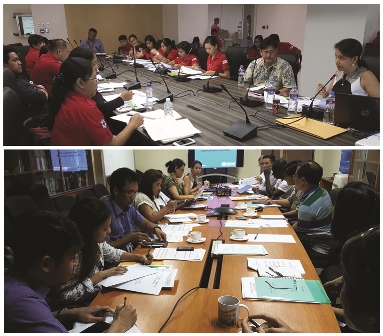
It is the Philippines’ turn to ‘switch’ today, 27 April 2016. On its National Switch Day, the country joins the rest of the world in replacing the trivalent Oral Polio Vaccine with the bivalent type (tOPV to bOPV).
This global vaccine change has been happening in over 150 countries in a two-week period since mid-April 2016. For the Philippines, the National Switch Day is also the highlight of the country’s celebration of the World Immunization Week.
“The Switch is part of the commitment [of the Philippines] to the Polio Endgame. We would like to see a world where polio is not anymore a problem,” says Dr Gerardo Bayugo, Undersecretary, Office for Technical Services of the Department of Health (DOH).
The widespread use of tOPV spurred the global decrease in wild polio cases, with the wild poliovirus type 2 last seen in 1999. The Switch to bOPV follows the declaration of the eradication of the wild poliovirus type 2 in 2015.
bOPV lacks the type 2 component, while tOPV contains the weakened versions of all the poliovirus types (types 1, 2 and 3). The removal of the type 2 component enables better protection and lower risk from polio outbreaks.
On the National Switch Day, all health workers will remove tOPV stocks from cold storage and will start using bOPV in routine immunization. bOPV is administered similarly as tOPV, when the child is at 1 ½, 2 ½ and 3 ½ months. The Inactivated Polio Vaccine is given along with the third OPV dose to strengthen the child’s immunity against polioviruses.
Following the Switch, the DOH Regional Offices will collect all remaining tOPV stocks and dispose them through encapsulation, a method approved by the World Health Organization (WHO). Encapsulation seals tOPV vials in cement, preventing further use or leakage. This also prevents type 2 polioviruses – even the weakened type in OPV – from circulating in the population or in the environment.
WHO has been working alongside the DOH for the successful planning, implementation and monitoring of the Switch. WHO provided technical assistance in the development and implementation of a national plan for the Switch and other Polio Endgame activities. WHO also supported the immediate procurement of the initial bOPV doses.

During and after the National Switch Day, external monitors from WHO, UNICEF and DOH will observe the Switch. The DOH and WHO also engaged the Philippine Red Cross to conduct independent monitoring to document that the Switch has been successfully carried out in all health facilities. Results of the monitoring activities will validate the country’s compliance to the global activity.
Undersecretary Bayugo describes the Switch as a ‘historical activity’, highlighting the Filipino health workers’ commitment in maintaining the country’s polio-free status and contribution to ending polio globally.
“This is not just national action. This is a global campaign. Our end goal is to eradicate polio from the face of the earth. Our participation counts a lot to realize this goal, so that future generations will not suffer anymore from complications brought about by polio. This is our legacy to the world. This is our legacy to the next generation of Filipinos,” adds Undersecretary Bayugo.
